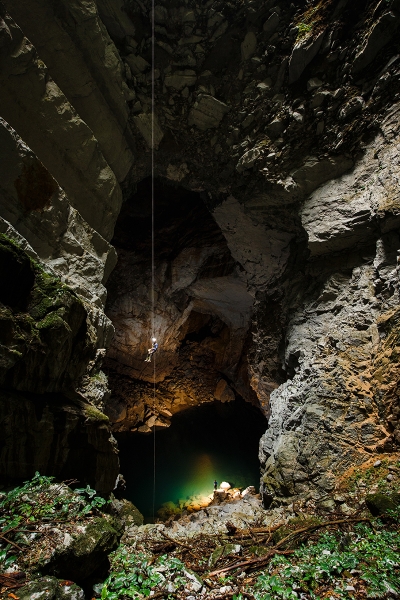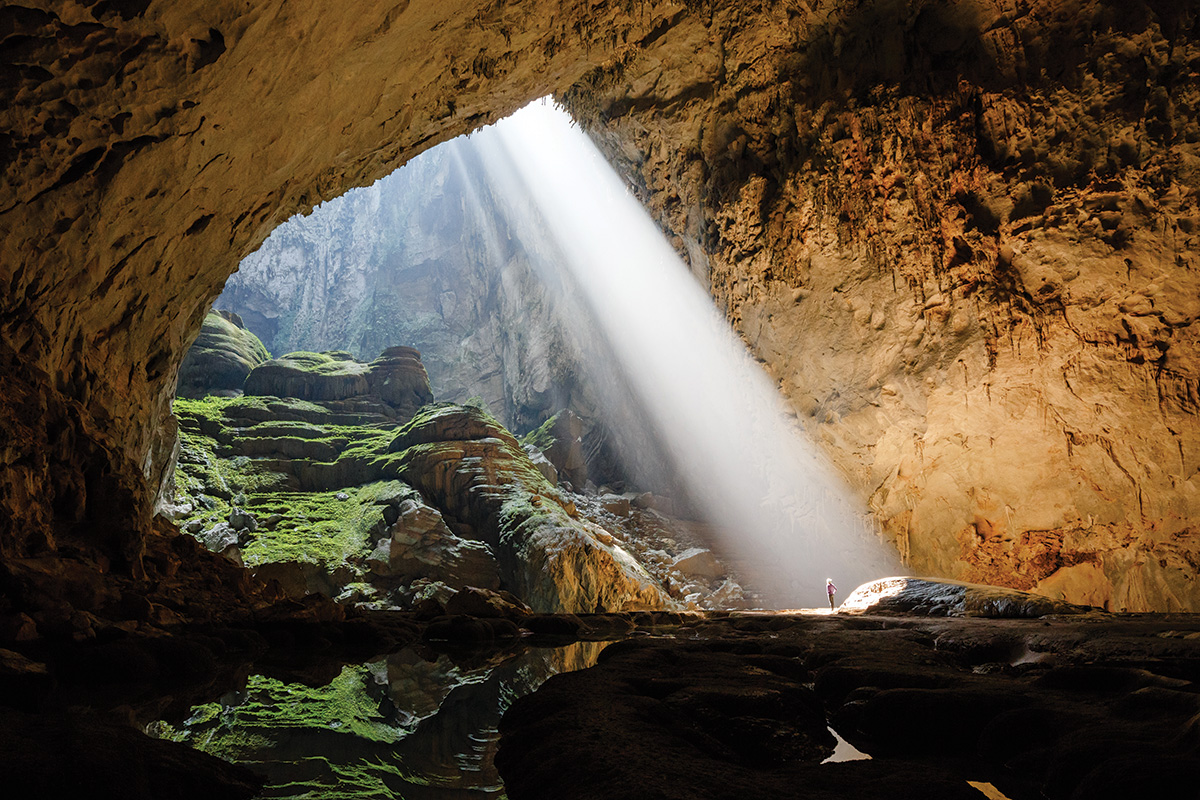Ryan Deboodt is addicted to discovering and photographing caves
Cave photography as the last frontier for Ryan Deboodt
• March 2017 issue
Beijing-based photographer Ryan Deboodt got hooked on caving and cave photography when he first explored Vietnam’s Phong Nha-Ke Bang National Park and discovered "how amazing the world underneath us is," he says. Since then he's made a career out of subterranean photography, his work appearing in Smithsonian, Conde Nast Traveler, and National Geographic online, among other publications. Here's what we learned about Deboodt's success capturing the unseen underworld:
Photographing caves is a unique specialty. What drew you to it and what keeps you coming back?
Deboodt: One of the biggest draws to cave photography—actually, it’s more expedition cave photography, discovering new caves and new cave passages—for me is photographing something that has never before been seen let alone photographed. I also like the problem solving aspects to it as well: How am I going to get enough light into the cave and power it for days, if not a week (since there is no way to charge batteries in a cave), while still keeping my pack light, as some of the caves can be days of trekking from the nearest civilization? I also like the limitless creativity it offers. With no natural light, I’m able to create a multitude of different scenes and different feelings by just moving the lights around.
Seems like complicated (and rewarding) work. What are the biggest challenges you face?
Deboodt: The lack of light is always the biggest challenge photography-wise. Caves are of course completely dark which means any light has to be carried in, and it’s not always fun crawling through tight passages for hundreds of feet while dragging the equipment behind you, or ascending a rope with all the camera gear weighing you down. Caves are absolutely brutal on camera gear. I’ve lost count of how many flashes I’ve broken and drowned inside caves. Cameras and lenses are always banging on walls or getting covered in mud. You have to be a bit careful in the cave as well, especially descending up and down ropes.

Which of your photos are you most excited about right now?
Deboodt: One of my favorite recent photos (above) is from a caving expedition that took place in Vietnam earlier this year. It’s of one of the expedition members descending down 460 feet of rope to the cave floor. I’m always drawn to the entrance of a cave—the line between the outside world and the underworld.
How was it made?
Deboodt: It was a four-week expedition searching for and exploring new caves in Phong Nha-Ke Bang National Park in central Vietnam. It was a long day trek to get to the cave, lugging in all the gear to the location. The terrain to even get to these caves is pretty intense—razor sharp, steep, limestone mountains in intense heat makes the going slow. This cave is pretty spectacular. It starts with a 460-foot vertical drop and the goes off into an underground river. Getting everyone and the lights in place is always a challenge and radios are definitely a necessity.
For this shot I was using a Canon EOS 6D and a Canon 16-35mm f/4.0 L lens. For the lighting, it was a mixture of daylight coming down the shaft and two Meggaflash Flashbulb Slow Peak flash bulbs to light up the inside of the cave. These are by far the most powerful lights out there; they’re basically light bulbs that explode when they’re fired. I used blue gels over the bulbs to match the daylight color temperature, and I have custom-built firers for the bulbs, which were triggered with Pocketwizards. The exposure: ¼ second at f/10, ISO 1600.
Amanda Arnold is associate editor of Professional Photographer.


 View Gallery
View Gallery

